A Idade da Pedra Lascada é a primeira fase da Idade da Pedra, também conhecido como Paleolítico. Vai de 2 milhões a.C (época aproximada em que o homem fabricou o primeiro utensílio) até 10.000 a.C (início do Período Neolítico).
The stone age Chipped is the first phase of the stone age, also known as Paleolithic. Goes from 2 million BC (approximate time in which the man fabricated the first utensil) until 10,000 BC (beginning of the Neolithic period).
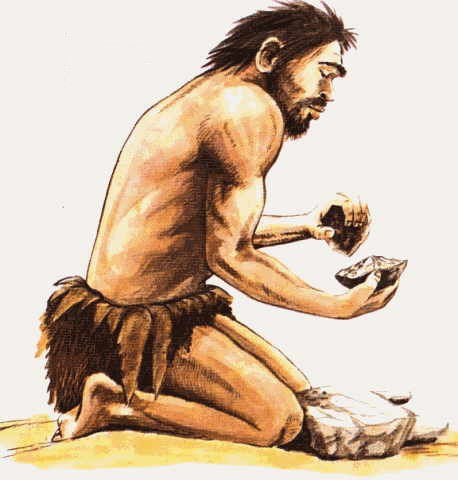
Este período da Pré-História é caracterizado pela fabricação de ferramentas (machados, lanças, cajados, facas, etc) e outros objetos de pedra, ossos e madeira. A vida neste período baseava-se na 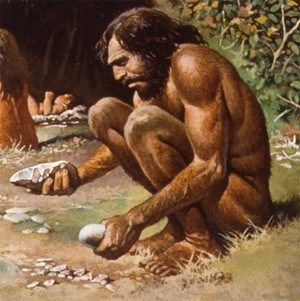 caça de animais, pesca e coleta de alimentos (frutos, folhas e raízes).
caça de animais, pesca e coleta de alimentos (frutos, folhas e raízes).
This period of prehistory is characterized by the manufacture of tools (axes, Spears, staves, knives, etc.) and other objects of stone, bone, and wood. Life in this period was based on animal hunting, fishing and gathering of foods (fruits, leaves and roots)
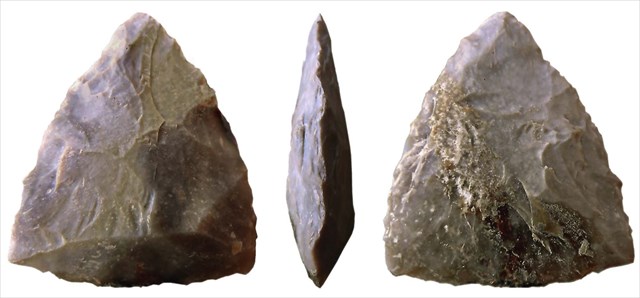
 Os homens deste período eram nômades,(nómadas) ou seja, deslocavam-se constantemente de um local para outro em busca de água e alimentos. Como precisavam deixar o local constantemente, procuravam moradias provisórias como, por exemplo, cavernas e vãos entre rochas.
Os homens deste período eram nômades,(nómadas) ou seja, deslocavam-se constantemente de um local para outro em busca de água e alimentos. Como precisavam deixar o local constantemente, procuravam moradias provisórias como, por exemplo, cavernas e vãos entre rochas.
The men of this period were nomads, they traveled constantly from one location to another in search of water and food. As they leave the premises constantly sought temporary dwellings such as caves and bays between rocks.
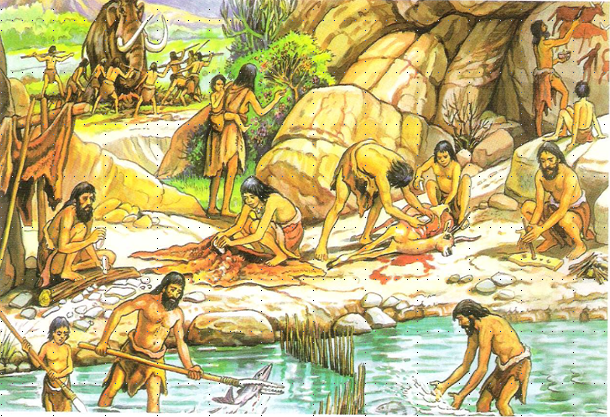
Os homens organizavam-se em pequenos grupos, cuja liderança era do mais forte e experiente. Aos homens cabia a tarefa de caçar, pescar e proteger o grupo. As mulheres ficavam com a função de preparar o alimento e cuidar dos filhos.
Men are organized in small groups, whose leadership was the stronger and more experienced. The men fit the task of hunting, fishing and protect the group. The women were with the function of preparing food and caring for children.
 A comunicação neste período era baseada na emissão de pouca quantidade de sons (ruídos).Outra forma muita usada de comunicação foram as pinturas rupestres (desenhos feitos em paredes de cavernas). Através destes desenhos (arte rupestre) eles marcavam o tempo, trocavam experiências e transmitiam mensagens e sentimentos.
A comunicação neste período era baseada na emissão de pouca quantidade de sons (ruídos).Outra forma muita usada de comunicação foram as pinturas rupestres (desenhos feitos em paredes de cavernas). Através destes desenhos (arte rupestre) eles marcavam o tempo, trocavam experiências e transmitiam mensagens e sentimentos.
The communication in this period was based on the issuance of a small amount of sounds (noise). Otherwise a lot of communication used were the cave paintings (drawings on walls of caves). Through these drawings (cave art) they were marking time, exchanged experiences and conveyed messages and feelings.
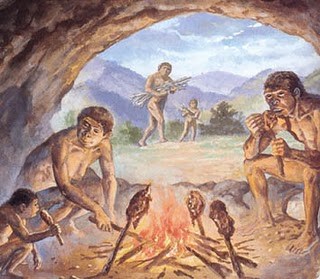
Uma das grandes descobertas do período foi a produção do fogo. Este era produzido através de dois processos. O mais rudimentar era a fricção de duas pedras sob um maço de palha seca e a faísca obtida incendiava a palha. Num segundo procedimento, mais elaborado, um graveto era girado sob o furo de uma madeira seca. Este procedimento, através do aquecimento, gerava calor que passava para a palha, provocando o fogo.
One of the great discoveries of the period was the production of fire. This was produced through two processes. The most rudimentary was rubbing two stones under a pack of dry straw. The spark obtained fired the straw. A second procedure, more elaborate, a stick was rotated under the hole of a dry wood. This procedure, through heating, generated heat into the straw, causing the fire.
Na idade da pedra, os homens já realizavam rituais funerários. Arqueólogos encontraram, em várias regiões, potes de cerâmica com restos mortais e objetos pessoais dentro de cavernas. Eram também realizados rituais religiosos com a utilização do fogo.
In the stone age, men have performed funeral rituals. Archaeologists have found, in several regions, ceramic jars with human remains and personal items inside caves. Were also conducted religious rituals with the use of fire.
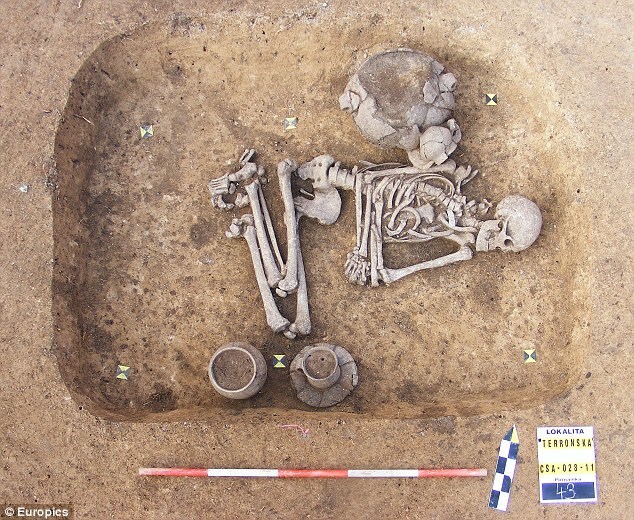
A cache:
Esta cache encontra-se no trilho de ligação entre a Ribeira Grande e a levada do Caldeirão Verde. Estacione no parque fornecido, e siga pela levada até waypoint 1 (ver Foto). Siga o trilho: Pico Ruivo, até waypoint 2 (ver Foto). Siga pela direita em direção ao Posto Florestal Vale da Lapa até waypoint 3 (ver Foto), neste local, suba à esquerda. Chegando a waypoint4 (ver foto) vire novamente à esquerda e siga até as coordenadas finais.
As coordenadas poderão estar com algum erro devido às condiçoes climatericas e a densa vegetação. É aconselhável visualizar as fotos fornecidas dos waypoints.
Parking - Cache - Parking --> 8.8km
This cache is located on the trail linking Ribeira Grande and the levada do Caldeirão Verde. Park in the Park provided, and follow by carried to waypoint 1 (see photo). Follow the trail: Pico Ruivo to waypoint 2 (see photo). Follow to the right towards the Forest Vale da Lapa Station until waypoint 3 (see photo), on this place, go to the left. Arriving at waypoint4 (see photo) turn left again and follow until final coordinates.
The coordinates may not be totally accurate due to weather conditions and dense vegetation. It is advisable to whatch the photos provided from waypoints.
Parking - Cache - Parking --> 8.8km
 (Click image to download)
(Click image to download)



